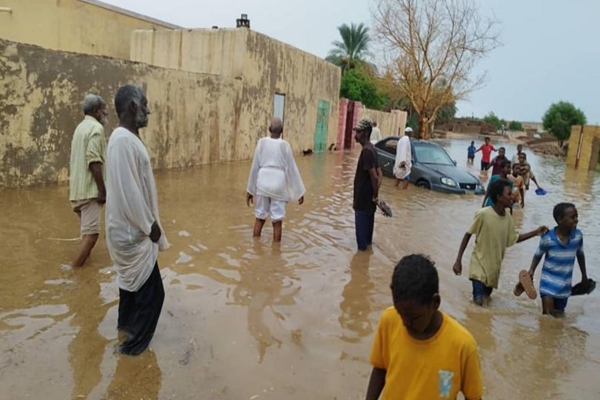Over One Million Impacted by Severe Flooding in South Sudan
Over one million people in South Sudan have been impacted by widespread flooding, according to the UN’s humanitarian organisation, Ocha.
More than a quarter of those affected, particularly in the northern regions, have been displaced due to rising waters.
Ocha reported that the displaced individuals are seeking refuge on higher ground. However, the persistent rains have made delivering aid to those in need increasingly challenging.
This flood season is among the worst South Sudan, a country with a population exceeding 11 million, has experienced in recent decades.
In Pibor, located in the east, a government relief agency has reported that 112,000 people have lost their homes.
According to reports, Joseph Nyao, the director of Relief and Rehabilitation, stated that those who have retreated to higher ground “don’t even have food, they left everything in that previous location.”
He also mentioned that the government is urging residents in flood-prone regions to promptly relocate to higher ground designated by local authorities for their safety.
“The level of water is still increasing and the displacement is continuing,” he added.
In May, the government warned the international community about the imminent risk of exceptional floods expected to affect the country in the coming months.
According to OCHA, since the rains commenced, 15 major supply routes have become impassable, disrupting the delivery of vital humanitarian aid to approximately 500,000 people across various regions of the country.
This situation exacerbates South Sudan’s ongoing struggle with the repercussions of the 18-month civil war in neighbouring Sudan.
Since April last year, over half a million Sudanese refugees and returnees from South Sudan have been registered in the country.
OCHA cautioned that South Sudan, already grappling with a deteriorating humanitarian crisis, is seeing its response capacity increasingly overstretched.
South Sudan is grappling with persistently high levels of acute food insecurity, primarily driven by natural disasters such as severe flooding and dry spells, which have led to soaring food costs. This year, approximately 7.1 million people, or about half of the country’s population, are reportedly facing crisis levels of food insecurity.
Aid agencies report that this humanitarian crisis has been further exacerbated by the swift return of over 630,000 South Sudanese citizens and around 200,000 refugees fleeing the conflict in Sudan.
Frances Ibiefo
Follow us on:






